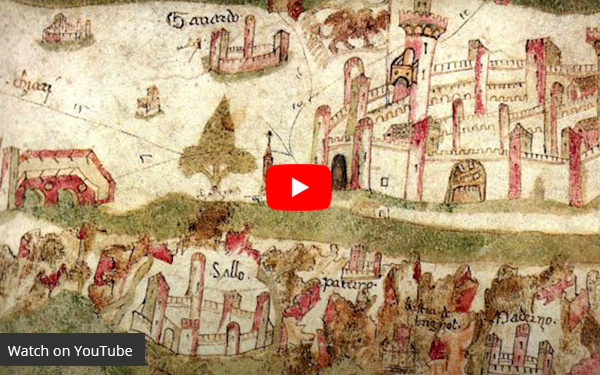The “Gina Fasoli” Centre recently contributed its historical studies to the drafting of the documentation that allowed the Porticoes of Bologna to be inscribed on the UNESCO World Heritage List in 2021. Rosa Smurra, scientific head of the Centre, answers a few questions to illustrate the characteristics of this significant section of our university.
What is “Gina Fasoli” Research Centre for the History of Cities, when was it established and what are its goals?
Founded in 2003 on the initiative of Francesca Bocchi, the “Gina Fasoli” Centre for the History of Cities is a research centre specialising in the study of the history of cities that combines historical methodology with the use of digital technologies. The aim is to build a set of research and teaching tools, such as the production of historical atlases of Italian cities and virtual reconstructions of urban landscapes, as well as tools and methods to provide on-line access to documentary sources useful for the study of the history of cities. The Centre is also engaged in outreach activities in order to involve a wide public and bring them closer to the world of historical research.
The Centre is dedicated to Gina Fasoli. Can you tell us why this scholar is so important and why the Centre was named after her?
Gina Fasoli (1905-1992) was the first Italian woman to hold a professorship in medieval history. She embarked on her teaching career at the University of Catania and later, in 1957, joined the University of Bologna, where she taught until 1980. She devoted herself to the medieval history of Italian cities right from the start of her career in research. However, she did not merely look at the legal and institutional aspects of cities, as was the norm back then; instead, she took into consideration their political, social and cultural components, along with the materiality of the urban landscape. This new methodological approach left a decisive and irreversible mark on Italian and European historiography.
What are the research topics covered by the Centre?
In addition to an interest in the “city of stone”, which involves studying the genesis and transformations of the material structure of urban organisms (squares, walls, public and private buildings, religious buildings, hydraulic infrastructures, etc.), the topics covered relate to society, the economy and taxation. The study of physical components, such as the age-old presence of porticoed streets, is aimed at highlighting the social reflection that this architectural situation has brought about.
The Centre is also involved in educational activities. How?
Our University teaching activities focus on the history of Italian and European cities, and includes a course on the history of European university cities, which is also taught in English.
The Centre also reaches out to the local area by participating in the organisation of courses and educational outings to encourage learning about the history of cities through direct experience of physical documents and places.

What projects is the Centre carrying out and what results have been achieved?
The Centre, which also provides scientific support to local authorities such as the Bologna City Council, has recently contributed its historical studies to the drafting of the dossier that allowed the Porticoes of Bologna to be inscribed on the UNESCO World Heritage List in 2021.
Some of the Centre's projects have also involved collaboration with our University’s Department of Architecture and with the IULM University of Milan, as in the case of EXPO 2015. Starting with an in-depth analysis of documentary and narrative sources, virtual reconstructions have been produced of some Italian piazzas and food markets in Dante's time. The documentary film of these virtual reconstructions was presented at the Italian Pavilion during EXPO 2015. The project was selected as an example of university excellence by the Conference of Italian University Rectors (CRUI).
The fruitful cooperation with the Bologna State Archive enabled the development of the “Medieval Sources Online Project”. This digital archive contains more than 20,000 images, created through the digitisation of more than 10,000 medieval tax documents, and the creation of metadata describing the tax documents of 13th-century Bolognese citizens. This metadata includes textual information (personal, professional, economic data, etc.) and accompanies a high-resolution photographic reproduction of the documents. This is an important resource at the service of researchers, facilitating and encouraging the study of this enormously interesting collection.
The Centre also has links with important international cultural institutes and associations such as the International Commission for the History of Towns. As part of its collaboration with this organisation, the Centre produces Historical Atlases of Italian Cities.

